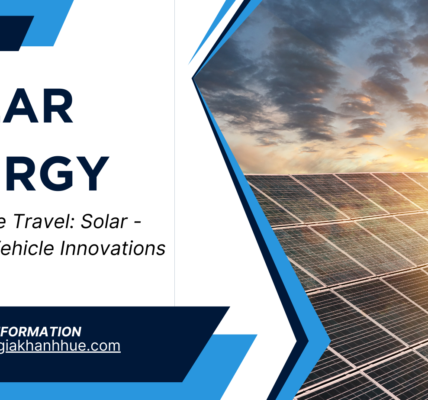In a world increasingly conscious of its environmental footprint, the concept of a solar-powered future has captivated the imagination of innovators, policymakers, and the public alike. Central to this vision is the transformation of how we travel. Solar-powered vehicles, once a distant dream, are rapidly becoming a reality, offering a tantalizing glimpse into a sustainable travel future that is both eco-friendly and efficient.
The Evolution of Solar-Powered Travel
The journey toward solar-powered transportation has been a progressive one. From the first solar-powered cars to the latest designs integrating cutting-edge photovoltaic technology, each step has been a leap towards greater efficiency and practicality. Today’s solar vehicles are not just prototypes but are becoming viable options for everyday use.
Benefits of Solar-Powered Vehicles
The advantages of solar-powered travel are manifold. Firstly, they contribute significantly to reducing carbon emissions, a critical factor in combating climate change. Secondly, solar energy, being renewable and abundant, offers a sustainable alternative to fossil fuels. Finally, the operational costs of solar-powered vehicles are substantially lower than traditional vehicles, providing long-term economic benefits.
Technological Innovations and Challenges
Technological advancements have been pivotal in the development of solar-powered vehicles. Innovations in solar cell efficiency, battery storage, and lightweight materials have dramatically improved the performance of these vehicles. However, challenges such as energy storage capacity and the variability of solar energy availability remain. Overcoming these challenges is crucial for the widespread adoption of solar-powered travel.
The Role of Government and Industry
Governments and industries worldwide play a crucial role in shaping the solar-powered future. Policies promoting renewable energy, investments in research and development, and incentives for consumers are essential for accelerating the adoption of solar-powered vehicles. The automotive industry’s shift towards solar and renewable energy sources is also a positive sign of changing priorities.
Global Trends and Future Prospects
Globally, the shift towards solar-powered travel is gaining momentum. Countries with high solar potential are leading the way, showcasing how solar energy can be harnessed effectively for transportation. The future promises even more innovative solutions, such as solar-powered public transport and solar charging stations, making solar-powered travel more accessible and convenient.
Integrating Solar Power into Urban and Rural Landscapes
The integration of solar power into both urban and rural settings is a key component of this travel revolution. Urban areas, with their dense populations and high energy demands, stand to benefit significantly from solar-powered public transit systems, reducing both pollution and traffic congestion. In rural areas, solar-powered vehicles can provide reliable transportation where traditional fuel sources are scarce or expensive, greatly enhancing mobility and accessibility.
The Economic Impact of Solar-Powered Vehicles
The economic implications of a shift to solar-powered travel are profound. This transition is not just environmentally beneficial but also economically advantageous. It stimulates growth in the renewable energy sector, creating jobs in manufacturing, installation, maintenance, and research. For consumers, the decrease in fuel and maintenance costs associated with solar-powered vehicles translates into substantial savings over time.
Consumer Acceptance and Lifestyle Changes
Consumer acceptance is crucial for the success of solar-powered vehicles. Public perception and awareness are gradually changing as people become more environmentally conscious and open to adopting new technologies. Lifestyle changes are also part of this acceptance, as individuals and communities recognize the importance of sustainable practices and are more willing to invest in technologies that align with these values.
Advancing Infrastructure for Solar-Powered Travel
Developing infrastructure is essential for supporting the widespread use of solar-powered vehicles. This includes not only the production of the vehicles themselves but also the development of solar charging stations and the integration of solar power into existing transportation networks. Governments and private companies are increasingly investing in this infrastructure, recognizing its importance in making solar-powered travel a practical reality.
The Road Ahead: Challenges and Opportunities
While the future of solar-powered travel is bright, there are challenges ahead. Technological advancements must continue to improve the efficiency and affordability of solar vehicles. Moreover, there is a need for consistent and supportive policies across nations to encourage the adoption of solar-powered transportation.



